The UK continues to supply Ukraine with weapons with which to defend itself against invading Russian forces.
The supply flights started before the invasion and have not stopped since. However, they now land in Poland near the Ukrainian border.
The UK continues to supply #Ukraine with weapons with which to defend itself against invading Russian forces. The supply flights started before the invasion and have not stopped since. However, they now land in Poland near the Ukrainian border. This flight has just landed. pic.twitter.com/L1EvdkRrzF
— George Allison (@geoallison) August 1, 2023
UK military assistance to Ukraine
To date, the United Kingdom has committed £2.3 billion in military assistance to Ukraine, with £250 million of this amount earmarked for the International Fund for Ukraine. The Government has indicated its intention to surpass this financial commitment in the upcoming 2023/24 fiscal year and is expected to provide further details in the forthcoming Spring Statement.
As the second-largest contributor of military assistance, the UK has provided lethal weaponry such as anti-tank missiles, artillery, air defence systems, armoured fighting vehicles, and anti-structure munitions, including three M270 long-range multiple launch rocket systems. In January 2023, the UK announced a substantial increase in combat support, with the provision of 14 Challenger II main battle tanks.
Moreover, the UK has contributed over 200,000 units of non-lethal aid, including body armour, helmets, night vision equipment, medical supplies, and winter clothing. In November 2022, the Ministry of Defense confirmed the delivery of the first of three retired Sea King search and rescue helicopters to Ukraine.
You can read about the specifics of UK military aid to Ukraine here.
Operation Interflex, the UK’s long-term training program for the Ukrainian armed forces, has the potential to train up to 10,000 new and existing Ukrainian soldiers every 120 days. The program includes the participation of the Netherlands, Canada, Sweden, Finland, Norway, Denmark, Lithuania, and New Zealand, with Australia joining in January 2023. The UK has expanded the program to include Ukrainian fast jet pilots and marines, as confirmed in February 2023.
Combined with economic and humanitarian aid, the UK has committed a total of £3.8 billion to Ukraine since February 2022. It is worth noting that the United States is the largest provider of military assistance to Ukraine, having provided $29.3 billion since February 2022.
Longstanding support
In response to Russia’s annexation of Crimea and the destabilization of eastern Ukraine, the UK has been providing military assistance to Ukraine since October 2014. The initial support included a package of non-lethal military equipment, and in 2015, the UK launched Operation Orbital, which focused on non-lethal training and capacity building for the Ukrainian armed forces.
Through several advisory and short-term training teams, Operation Orbital has been the primary means of providing training and assistance to Ukrainian forces. Additionally, the UK launched an initiative to improve Ukraine’s naval capacity and provide training for its naval forces.


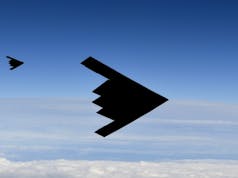
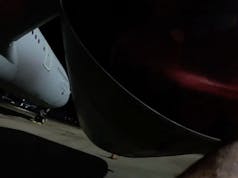

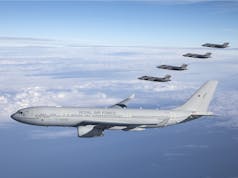
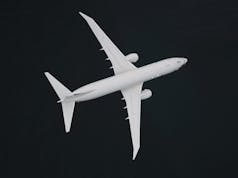
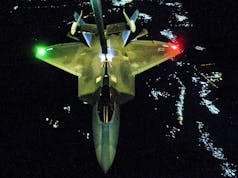

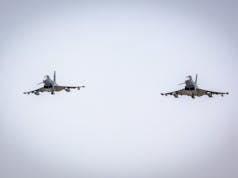

Maybe we should look at picking up a couple of spare C17s from Uncle Sam. Now that the C130Js have been withdrawn our air transport is looking rather thin, even when compared to France and Italy. I know we have 8 C17s, but France’s order of 50 A400Ms really casts a shadow on our much smaller fleet. I think we should have a fleet of 50 transport aircraft, 10 x C17, 30 X A400M and 10 X C130 replacement like some C-27J.
Someone said that it’s only costing the USA 4%. Of its defence budget to destroy what it has spent 70 years preparing and paying its forces to do. A bargain by all accounts.
I hope the U.K. has enough stuff ordered to give Ukraine what it needs to get through the conflict quickly. A war of manpower will not go in Ukrainians favour unfortunately. Got to be smarter than a slugging match.
Regrettably, the words conflict & quick rarely make good bedfellows.
The long term supply of weapons is exactly what the Russians thought the west could not or would not sustain. It seems they were wrong..
It’s money well spent, especially if it’s time limited munitions!!!
Making the Russians hurt is a noble effort worth supporting…..
Just a little reminder on how all the so called Miltary experts emplyed by the media reacted when the Uk handed over 2000 NLAWS last Jan:
The NLAW Missiles The U.K. Rushed To Ukraine May Only Be Useful In Desperate Circumstances
On Jan. 19, British defence secretary Ben Wallace told the Daily Mail the U.K. had already delivered 2,000 NLAWs to Ukraine, a number he indicated might continue to rise. The missiles were London’s way of providing defensive aid to Kyiv as Russian forces deploying around Ukraine’s borders give the impression a new invasion may be imminent.
The British Army also dispatched 30 paratroopers to train Ukrainian forces in operating the NLAWs, which were undoubtedly chosen in part for their ease of use, and thus ability to be rapidly adopted by Ukrainian forces facing the current crisis.
The missile deliveries demonstrate London’s support for Kyiv and will be welcomed by Ukraine’s military, which faces formidable challenges defending the numerous possible vectors a Russia attack. However, these weapons would only be useful in fairly desperate circumstances by Ukraine’s military.
Will NLAW missiles help Ukraine?
Since the Bazooka, Panzerfaust and PIAT were introduced in World War II, short-range infantry anti-tank weapons have proven their value by compelling enemy armored vehicles to keep their distance, rendering armoured advances without friendly infantry screens more perilous. During the Cold War, successors like the RPG-7 and LAW also offered insurgents practical portable weapons to defeat armoured vehicles they otherwise couldn’t dent.
While NLAW has greater range and long-distance accuracy than RPG or LAW-type weapons, it still falls well under the long-range punch of powerful anti-tank guided missiles (ATGMs) like the TOW, Javelin or Kornet that can defeat main battle tanks from miles away. Long range not only increases attack options, but makes it much more likely an anti-tank team can break contact with enemy forces and escape detection and retaliation after firing.
Unfortunately for Ukraine, modern Russian “non-contact warfare” military doctrine emphasizes destroying enemy forces from long distances with artillery supported by drone surveillance assets, rather than aggressively pushing tanks and infantry forward to engage with direct fire. By this doctrine, most of the destruction of enemy forces is achieved at distances the target simply can’t shoot back at.
Of course, Ukrainian forces will attempt to use terrain and concealment to avoid long-distance fires and ambush Russian forces at more favourable engagement ranges. But Ukraine is largely made up of open plains lacking in natural cover.
In urban environments in which buildings limit lines of sight, however, shorter-range weapons like the NLAW come into their own and can exact a steep toll on armoured vehicles, such as occurred in the first Battle of Grozny in December 1994, when dozens of Russian tanks were destroyed by Chechen insurgents mostly using short-range rocket launchers.
But relying on urban warfare is hardly ideal. That means accepting that major cities will be extensively destroyed in the fighting and that hundreds or thousands of civilian residing there will die. Moreover, Russia’s military ultimately did devise a method to deal with heavily defended cities. When Russian forces invested Grozny again in 1999, they systematically levelled it with artillery while creeping dismounted troops slowly forward to identify new enemy positions.
NLAWs therefore will aid Ukrainian troops most if they manage to bog down Russian forces in relatively close quarters urban or rural guerilla warfare, but won’t help at all countering Russia’s preferred tactic of blasting enemies from a long distance.
By contrast, the far more expensive Javelin missiles earlier delivered by the U.S. in more limited quantities (77 launchers, 540 missiles by one count) are considerably more flexible weapons with a range of 2.5 miles. But they too may be suppressed by drone-supported artillery firing from greater ranges.
Ukraine’s unenviable dilemma is that the kind of longer-range surface-to-air missiles and precision land-attack weapons it needs to patch up its vulnerabilities to Russian airpower, missiles and artillery are too expensive and complex to be transferred easily like the NLAW, and ordinarily require months if not years to train for and integrate.
A lot of press thought Ukraine would fall pretty quickly. I myself was unsure but thought even if it did the insurgency would go on for a long time.
Now 550+ days later Ukraine is still holding on.
Russia is still a difficult force to shift but at some point the Russian troops will want to go on leave and not return to the conflict. Hopefully this mess ends soon with Russia going home.
Many in the South are well beyond their projected withdrawal and leave protocols, they simply cannot be spared. We will see how long this can be sustained.
Yes a lot did (myself included) but let’s not forget that the British leadership alone out of the West didn’t subscribe to that mindset and that after London did so, it was berated by major European capitals (Berlin, Paris) for not helping (Lets not forget that Macron was in Moscow a fortnight before Russia invaded, where he came across as appeasing Moscow (But to be fair he most likely was doing so in which bolster his chances for the April Polls)) and lets not forget Germany stalled in sending heavy weapons to the Ukraine until the 26th of April , we saw the same with MBTs and they are still holding out in furnishing Ukraine with the Taurus cruise missile . The impression I got from the likes of Germany, France and Spain, was let Moscow win inside the Ukraine, give it a few months of huffing and puffing and it will be business as usual with Moscow especially as Berlin was so rooted regards gas imports. The problem as we have all saw was Kyiv didn’t fold (primarily due to those NLAWS) and the Europeans the so-called defenders of Human rights were forced to back the Ukrainians due to the public pressure forced onto them by the little man standing up to the Russian bear. Tell you what, pound to a penny the EU mandarins hated London during those early months , but hey what’s new.
The war in Ukraine was not in German nor France´s interest. German for gas, France for Titanium, Uranium and « friendship » with Russia, friend in 2 world war’s. In desperate times, Russia was with UK and France. UK wanted to preserve India and enticed WW1 to divert Russia’s attention from India. We in France needed Russia to be the allied on the other side and survive as a nation. Many french remembers.
You cannot change a strategic culture in a snap. We support Ukraine for principals, US support Ukraine for gaz and weapons interest, UK support Ukraine for no real reasons. UK no longer as an Indian colony.
At the end, what Ukrainien need the most is artillery. We send the caesar canon. Not enough, but the one they need.
Something for Wagner and Lukashenko to think about!
“Polish Deputy Prime Minister and Minister of National Defence Mariusz Błaszczak approved the establishment of a High-Mobility Artillery Rocket System (HIMARS) academy and the 1st Rocket Brigade, Błaszczak’s ministry announced on its website on 27 July. The brigade will be based in Toruń in north-central Poland and Orzysz, 120 km from the Belarusian border.
Modelled on the Abrams Tank Training Academy in Biedrusko, the HIMARS academy will provide training and logistics for the system. The training will take place at the Toruń training area, according to Błaszczak. The academy would also be used for cooperation with Estonia, Latvia, and Lithuania, which are also procuring HIMARS, he said.”
LINK
Belarusian helicopters on a training flight flew into Poland today, worryingly without detection by Polish radar (residents actually reported it, military denied then confirmed it later). More Polish troops are being sent to the area as a result, but one wonders whether this was deliberate probing or pilot incompetence. However it shows how delicate the situation on the Polish and Lithuanian borders are and with Wagner about, this could get very provocative and I think that will become inevitable if the Ukranians make serious progress particularly in the South, as Putin will get seriously desperate about intimidation to try to discourage support at every opportunity and level.
Agreed. Equally, the Suwalki Gap is of concern as this could cause a real problem for NATO if Wagner moves in.
Interestingly, the Danes are currently in the process of upgrading their radars, perhaps a few more along the Polish border would help matters.
Denmark replacing radars in coastal regions
31 JULY 2023
LINK
How can we know whether Polish radar detected it? Is it not possible that they did and simply decided to keep it quiet until outed by those local residents? Maybe Poland hoped, for reasons of stability (and as you say delicacy), to deal with it with quiet diplomacy instead.
Given the tension, the number of Rivet Joints, E3s, F-35s, etc, currently patrolling from the Baltic to the Black Sea, supplementing satellite surveillance and ground based radar, it would surprise me if Polish and NATO intelligence were so blindsided that the first indication of Belarus activity was via civilian Mk1 eyeballs. Even coming in at low altitude.
Possibly came in very low and very slow. Most radars are not tuned to pick up an incoming aircraft if travelling less than say 100mph.